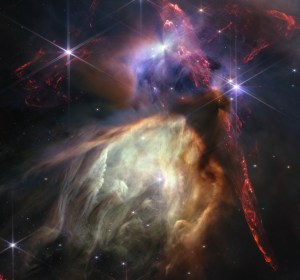Cassini Significant Events 8/6/08 - 8/12/08
August 14, 2008
(Source: Cassini Project)
The most recent spacecraft telemetry was acquired on Aug. 5 from the DSN tracking complex at Goldstone, Calif. The Cassini spacecraft is in an excellent state of health and all subsystems are operating normally. Information on the present position and speed of the Cassini spacecraft may be found on the "Present Position" page at: http://saturn.jpl.nasa.gov/operations/present-position.cfm.
Wednesday, August 6 (DOY 219):
The S43 background sequence was radiated to the spacecraft today. Execution will begin on Aug. 10.
Friday, August 8 (DOY 221):
Orbit Trim Maneuver (OTM) #163, scheduled for today was cancelled.
Uplink Operations sent commands to the spacecraft today for a Cosmic Dust Analyzer (CDA) Enceladus 4 Flyby real-time activity that will begin execution on Aug. 11 at 17:59 Spacecraft Event Time (SCET)
Sunday, August 10 (DOY 223):
The main engine cover was closed Aug. 10 for a potential dust hazard at Enceladus on Aug. 11 and Aug. 19, and will be reopened on Aug. 19.
The S42 sequence concluded and S43 began execution at 20:00 on Aug. 11 spacecraft time. The sequence will run for 35 days and conclude on Sep. 13, 2008. During that time there will be targeted encounter of Enceladus and seven non-targeted flybys -- one each of Pallene and Pan, Atlas, Titan, Janus, Methone and Epimetheus. Only one orbit trim maneuver (OTM-164) is scheduled. During this sequence, solar conjunction will occur Sept.1-7.
Monday, August 11 (DOY 224):
Non-targeted flybys of Methone, Mimas and Daphnis occurred today.
Cassini flew past Enceladus today 50 kilometers from the surface, and at a speed of 17.7 kilometers per second. Closest approach occurred at 21:06 spacecraft time at 28 degrees S latitude, 98 degrees W longitude. The main goal was to obtain detailed images and remote sensing data of the geologically active features on Enceladus. From this data, scientists may learn more about how eruptions, tectonics and seismic activity alter the moon's surface. Instruments on board Cassini will map the Enceladus' surface in visible, infrared and ultraviolet light. Measurements will help determine the size of the ice grains and distinguish other elements mixed in with the ice, such as oxygen, hydrogen, or organics.
Science highlights:
The Imaging Science Subsystem executed a "skeet shoot" series of images to carefully balance light and smear during the closest approach of this fast flyby. The result will be the highest-ever resolution images of the tiger stripes, and clues to what drives the jets that feed the plume.
The Composite Infrared Spectrometer observed south polar temperatures during solar eclipse to determine the heat capacity and textural properties of the regolith; maps from these data will complement data obtained in the previous flyby.
The Visual and Infrared Mapping Spectrometer performed compositional mapping to determine the identity of volatiles, organics and minerals and place them within a geologic context.
The Ultraviolet Imaging Spectrograph obtained spectral images of Enceladus in the extreme-ultraviolet and far-ultraviolet to map surface composition, including water ice abundances and grain sizes, and searched for volatiles off the limb.
Magnetospheric and Plasma Science instruments examined the particle environment at 54 kilometers from the surface. The fields and particles instruments will eventually determine the nature of the material coming from the surface and its relationship to the
E-ring. In addition, they will distinguish between two potential populations of particles: particles from the plume and particles sputtered from elsewhere on the surface. The magnetometer team hopes to determine whether Enceladus generates an induced magnetic field from a subsurface ocean and to determine the composition of plume material by studying ion cyclotron waves in the magnetic field measurements.
For images, videos and a mission blog on the flyby, visit:
http://saturn.jpl.nasa.gov/news/press-release-details.cfm?newsID=863
http://saturn.jpl.nasa.gov/news/events/enceladus20080811/index.cfm
http://blogs.nasa.gov/cm/blog/cassini-aug08
Tuesday, August 12 (DOY 225):
A kick-off meeting will be held today for the first of two possible live updates during the execution of S43. The first update is for Saturn vectors on DOY 232 with the Visual and Infrared Mapping Spectrometer as the driving instrument. A Go/No Go decision will be made no later than Aug. 13.






























